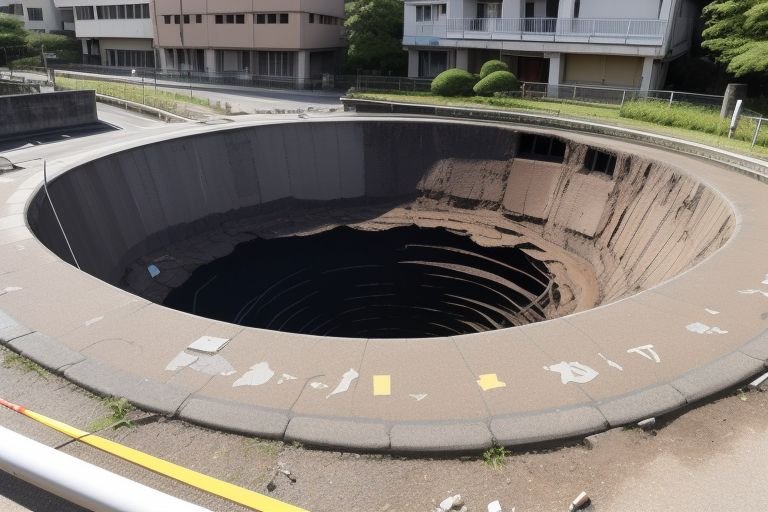The latest sink hole which recently occurred in Hiroshima City that widened have resulted to major inconvenience and alarm among citizens and the government. Aminzee, the incident which happened on Thursday morning has caused buildings to tilt and one part of the road has caved in hence residents are advised to vacate the area. In its recent call to people residing close to the impacted area, the Hiroshima City government advised them to leave immediately due to hazardous conditions of the soil.
The sinkhole, which emerged around 8:The 50 a.m., local time, event has attracted the attention of city administrators, geologists, and emergency service providers. From the reported data, the size of the cavity is great enough to either directly demolish some nearby structures and infrastructure of the building. The full extent of the sinkhole is still uncertain, however, socio-geopolitical effects are immediately observable, as several of the buildings have become visibly tilted on their foundations, and a section of the street has fallen directly into the hole.
The local authorities have not wasted time when responding to the calamity, with the area being sealed and an operation center created for rescue and assessment. Due to the impact of the storm local structural engineers and geotechnical consultants are slated to assess the degree and likelihood of future soil settlement. Their conclusion will be vital in formulating a strategy that would attend to the existing safety risks and the directions on the way forward for stabilizing the region.
The recent emergence of the sinkhole has prompted the public to consider what has led to the occurrence and whether the same scenario can occur in other parts of Hiroshima? They are mainly studying if the problem originates from the gradual erosion of an underground water course or sewer system, if it’s due to age of some of the affected structures, or exists due to presence of hitherto unknown large underground cavities. This event underscores the lessons for futural design and planning regarding the adjustment of interactions between the urban environment and geology when administering cities.
It has been in point to several hundred residents and businesses near the area of the sinkhole and a formal evacuation order has been communicated to the people living in the area. The local government agencies are trying to create temporary accommodation for the victims who were affected by the incident. The infected have also been accommodated and treated in various health facilities which the city government has also provided an information hotline that informs the public of the situation and also advise on safety measures as well as place to go to in case of forced evacuation.
For example, the sinkhole does not only affect the immediate area but also has led to closure of many roads and halted some utility services. Some roads have been closed down to allow passage of vehicles that are used to enhance security, but results in jams in nearby areas. The affected utility companies are relocating to survey the underground pipes and cables which could have been affected by the ground collapse.
Whenever the news of the sinkhole was reported it received its attention at the national level with media houses in Japan focusing on the event as it unfolded. Since then, the event has given rise to conversations regarding the state of urban infrastructure and the necessity to better understand geology in which areas with high population density are situated. A few people, including engineers, have suggested that new and existing building codes as well as applicable land use laws be reconsidered to include contingencies for ground instability.
This sinkhole disaster happens at the time when Japan is in a continuous fight with all sorts of natural disasters and infrastructure complications. New generation social challenges include extreme weather event, earthquakes, other geological events which have challenged the country’s capacities for disaster management. This latest event further highlights the need for a continued commitment to both maintenance of key infrastructure assets as well as the continuous improvement of early warning detection systems for ground movement.
While on-going with the crisis in Hiroshima, much is being done at individual, community or national level to prevent putting more lives at risk besides contacting the necessary authorities to help tend for the affected or contain the crisis as it prolongs its impacts. It thus remains as a reality check on the unreliable nature of geology and hence the call to remain extra cautious on the continuing development of cities and management of structures. The next few days and weeks will reveal further details on how the experts are going to cope with it and how to avoid similar situations in the future for the sake of the people and their homes in Hiroshima.



